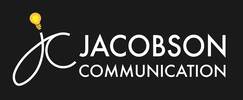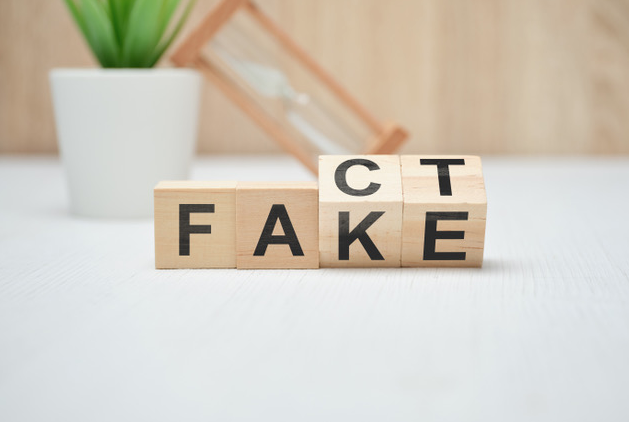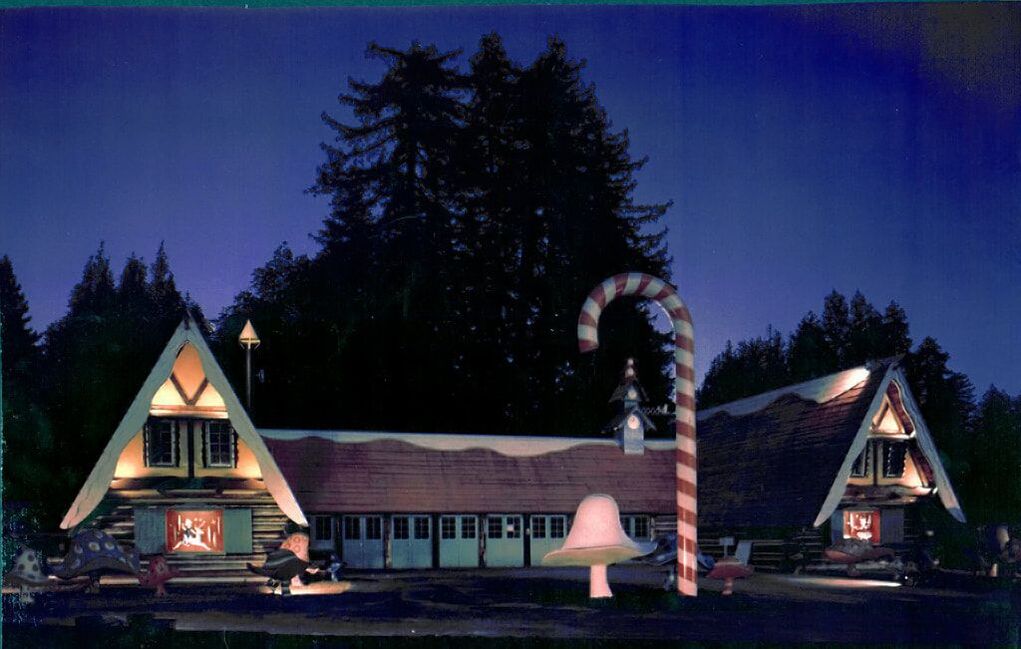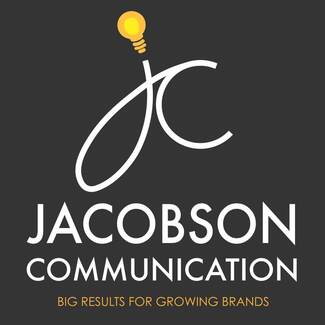|
Your PR Director can mean the difference between success and failure for your startup. They can help you get noticed, which may lead to future funding, lucrative business partnerships, and more customers. Good PR can open doors that were previously closed for your brand. It’s important to hire well.
As a PR Professional, I’ve worked with hundreds of startups and heard many stories. I’ve also seen a lot of PR mistakes that I want you to learn from. Here are some of the most common. 1. They Hire Someone From a Big Company or PR Agency Hiring a PR person from a large company is a gamble. I’ve seen several startups boast that their PR Director was from Google or Facebook or even a large PR firm, only to let them go six months later when they realized that person wasn’t able to function without a larger budget and team. For many theme parks Spring is a dormant time of year when the worst of the weather passes. But all should not be quiet in your marketing and PR departments. Spring is a great time to jumpstart many activities that will pay off in the busy season.
Here are 12 activities you can start now to prepare your park for peak season. 1. Map Out Your “Big Announcements” and stories for the Year Do you have a fantastic summer music lineup you’ll need to promote? How about a new ride opening or attraction? Whatever it is, map it out and put it on your editorial calendar now so you have time to plan for and promote it. Hiring a PR firm is a big step for any new or growing brand. If you've reached this point, congratulations, you’ve gotten farther than a lot of other brands ever have. Here are seven common myths to avoid when considering hiring a PR firm.
1. The Best PR Firms Are Really Big Choosing a big PR firm that works with big clients can be a bad choice for new and emerging brands for several reasons. Big PR firms are expensive for cost-conscious brands. Unless they have a “small brand” department big PR firms are mainly focused on their big, name-brand clients, because they look good, and they bring in most of the money. Most big PR firms don’t specialize in the nuances of startups. While they may have fancy reports and a fleet of underlings to meet with you regularly, big PR firms don’t usually understand the specific needs of budding entrepreneurship associated with startups. You’re better off looking for PR firms that specialize in, and have results for companies of a similar size and focus to yours. Santa’s Village in Scotts Valley California is the abandoned amusement park of my dreams. It closed the year I was born, but that didn’t stop my lifelong obsession with it, nor did it stop me from working for Santa’s Village today, but let’s not start with the end of the story just yet. By the time I first found out about the enchanting Bay Area Christmas theme park, it was only a memory, and someone else's memory at that.
To put it in Dickensian terms; Santa’s Village was dead to begin with; as dead as an abandoned theme park could be. It was one of three Santa’s Villages across the country; the first franchised amusement park. But the heydays of mid-century modern luxury dissolved into the gas crisis and economic despair of the 1970s. The Santa’s Village Corporation dissolved in the late 70s. The parks went their separate ways and eventually all closed. And you might assume this is where the story of Santa's Village stops, but you'd be wrong. Santa’s Village, my favorite theme park in the entire world, closed the year I was born. This minor inconvenience however didn’t stop me from spending a good deal of my life obsessing over it, tracking down stories, and looking for signs of life, no matter how impossible. I’m not your normal theme park fan; I go deep into stories and personal histories collecting forgotten memories, pictures, and trinkets from independent parks, many of which no longer exist. Santa’s Village has always been at the center of my curiosity. Frontier Village of San Jose and The Lost World, of Scotts Valley have also been on my list of curiosities, but if I had to pick one to bring back, it will always be Santa’s Village.
Now, on a recent Friday in May, after years of waiting, I am happy to report that I finally ventured into the park’s Welcome House and spent a weekend in the actual Santa’s Village. Not only did I visit, I now work for the park, offering my public relations and creative services, and I couldn’t be happier about it. As long as I can remember, I’ve been obsessed with a theme park that now, only exists in memory. Before I had words to describe it, I saw its ghost, every time my parents drove home. The abandoned relic with twenty-foot candy canes and giant colorful concrete mushrooms waited, faded and forgotten, to beckon travelers to an empty Welcome House and a hidden enchanted forest beyond. But the cars no longer stopped as they sped along the highway through the Santa Cruz mountains and the children's laughter that once encompassed the park gave way to a lonely wind.
Not everyone grows up next door to an abandoned winter-themed amusement park. As far as I was concerned, I was one of the luckiest kids in the world. I like to think that was part of the founder’s dream; for more kids to live near such a park. Glenn Holland envisioned Santa’s Village after growing up during the Great Depression. He never really had a childhood and he made up for lost time. "People trust Google Nest with their lives. The fact that Google, the third largest tech company in the world (only behind Apple and Microsoft), is alerting Nest customers about replacing their life-saving products one to two years before they actually expire, is unconscionable. Especially during a pandemic, when so many working-class Americans are unemployed, trying to be prudent about what little money they might have left to spend."
You’re busy running a startup. You don’t have a communications “team” of 50 people to help you prepare for conversations with the press. You personally don’t have time for an intensive 2 week course on media training. What you DO have is an interview or media opportunity in two days that you’re scared to death about.
Fear not. Here’s what you need to know to get started. 1. Know The Show Familiarize yourself with the show or venue you’re going to be on. Do your homework. If it’s a blog, read previous articles. If it’s a TV show, watch previous episodes. If it’s a podcast, or radio show, listen to a few episodes. If it’s available, read over the list of episode titles and guests over the last few months. Try and get a sense of why the show exists and what it’s about. Guest Post by By Amanda Plank, Founder of Merch Minion
With the recent temporary shutdown of many small businesses and startups during the COVID-19 pandemic, many financial relief programs are now available. The difficulty is knowing what’s out there, and how to navigate a system that, frankly, was never meant to deal with this kind of pressure. Fear not. It is possible, with a lot of patience and persistence to get help. Here’s what you need to know. No product sells itself without help–not even in the best of times. So how is your business supposed to market itself when, as they say in Hamilton, “the world turned upside down?”
On the marketing and PR front, a lot has changed. Ads from “the before time” featuring large crowds or one-on-one interactions can be downright triggering. Regular marketing and PR cycles have been disrupted, major events have been canceled, and seasonal trends that worked last year just don’t make sense now. On the homefront, Americans face problems that keep people up at night. More people are working from home, if they’re lucky enough to still have a job. Kids are “learning from home,” putting extra strain on parents and caregivers. Unemployment in the United States is at a historic high. Many have lost loved ones. Many are wondering how they’re going to get through this time. So what’s a marketer to do? It doesn’t seem right to try to get people jazzed about your product when the world is so very different than it was mere months ago. Fortunately, there are some simple guidelines to help you keep your company’s brand as stable as possible, despite this most unusual and difficult time. |
Article Categories
All
About the AuthorJennifer is a storyteller who connects big ideas with audiences. She specializes in public relations, brand development, and creative services for startups, theme parks, musicians, authors, nonprofits, and more. From audience awareness to brand development, and positive social change, Jennifer works with clients she believes in and that she believes she can help. Archives
April 2022
|
Branding Resource Center
Get Jennifer's Upcoming BookSnow Tires for Startups: How to Get PR Traction, is a practical guide for startups and growing brands who want to get the most out of their PR. Learn to think like a storyteller and weave your brand into a larger narrative that puts you in the history books. Snow Tires for Startups will help you navigate the world for PR and get the positive attention you need to move your brand forward.
|
“Is my startup ready for PR?" The answer has a lot to do with what your startup is already doing. Find out if you're ready now, if you should wait, or if you should have started PR months ago with this simple quiz.
Read more. 3 Ways Big PR Firms Slow Down StartupsDo big global PR firms work for startups? The siren song of larger, global PR firms are tempting to many, but there are good reasons many startups should avoid them. You can do better than a big firm. Here’s why.
Read more. |
|
Jacobson Communication specializes in public relations, brand development, and creative services for startups, theme parks, musicians, authors, nonprofits, and more. From audience awareness to brand development, and positive social change, you'll be surprised what better communications can do for your brand.
|
Copyright 2025 Jacobson Communication
LAND ACKNOWLEDGEMENT
Acknowledgement to the southern Lushootseed-speaking Coast Salish Indigenous Peoples whose land I live and work on.
The Duwamish People
This land also includes the traditional land and waterways of the first people of Seattle, the Duwamish People of past and present. It is with honor and gratitude to the land itself, the plants, animals, and the Duwamish Tribe that I practice my work.
The Puyallup Tribe
This land is also on and adjacent to the traditional homelands and waterways of the Puyallup Tribe. The Puyallup people have lived on and stewarded these lands since the beginning of time and continue to do so today. I recognize that this land acknowledgement is one small step toward true allyship, and I commit to uplifting the voices, experiences, and histories of the Indigenous people of this land and beyond.
To learn more about the Puyallup Tribal Language program, visit:
https://www.puyalluptriballanguage.org
The Awaswas People
I would not be the person I am today without growing up in what is now called the Bay Area. For the Awaswas-speaking Uypi Tribe, the Amah Mutsun Tribal Band, current and future generations of Indigenous Peoples across the Bay Area. I acknowledge and honor the eight tribes known as the Awaswas People, who were the original people and caretakers of much of what is now known as the South Bay Area. The Awaswas had, since the dawn of time, worked with and cultivated the area so it had a variety and abundance of animals and plants. Their ways and practices maintained balance and biodiversity that the area has not known since colonization. The Spanish displaced, enacted violence against, enslaved, and forced the Awaswas People and other Indigenous Peoples of the Bay Area into the mission system, taking the Awaswas people to missions Santa Cruz and San Juan Bautista. Some Indigenous peoples of the area were able to escape to the south and into what is now Mexico. Some of those who escaped had to deny their identity and say they were Mexican in order to survive. Much of this history is still being discovered. Today, the Amah Mutsun Tribal Band, composed of the descendants of Indigenous people taken to missions Santa Cruz and San Juan Bautista during Spanish the Spanish Colonization of the Central Coast is working hard to restore traditional stewardship practices on these lands and heal from historical trauma.
To learn more about the Amah Mutsun Land Trust, click here.
The Duwamish People
This land also includes the traditional land and waterways of the first people of Seattle, the Duwamish People of past and present. It is with honor and gratitude to the land itself, the plants, animals, and the Duwamish Tribe that I practice my work.
The Puyallup Tribe
This land is also on and adjacent to the traditional homelands and waterways of the Puyallup Tribe. The Puyallup people have lived on and stewarded these lands since the beginning of time and continue to do so today. I recognize that this land acknowledgement is one small step toward true allyship, and I commit to uplifting the voices, experiences, and histories of the Indigenous people of this land and beyond.
To learn more about the Puyallup Tribal Language program, visit:
https://www.puyalluptriballanguage.org
The Awaswas People
I would not be the person I am today without growing up in what is now called the Bay Area. For the Awaswas-speaking Uypi Tribe, the Amah Mutsun Tribal Band, current and future generations of Indigenous Peoples across the Bay Area. I acknowledge and honor the eight tribes known as the Awaswas People, who were the original people and caretakers of much of what is now known as the South Bay Area. The Awaswas had, since the dawn of time, worked with and cultivated the area so it had a variety and abundance of animals and plants. Their ways and practices maintained balance and biodiversity that the area has not known since colonization. The Spanish displaced, enacted violence against, enslaved, and forced the Awaswas People and other Indigenous Peoples of the Bay Area into the mission system, taking the Awaswas people to missions Santa Cruz and San Juan Bautista. Some Indigenous peoples of the area were able to escape to the south and into what is now Mexico. Some of those who escaped had to deny their identity and say they were Mexican in order to survive. Much of this history is still being discovered. Today, the Amah Mutsun Tribal Band, composed of the descendants of Indigenous people taken to missions Santa Cruz and San Juan Bautista during Spanish the Spanish Colonization of the Central Coast is working hard to restore traditional stewardship practices on these lands and heal from historical trauma.
To learn more about the Amah Mutsun Land Trust, click here.












 RSS Feed
RSS Feed



